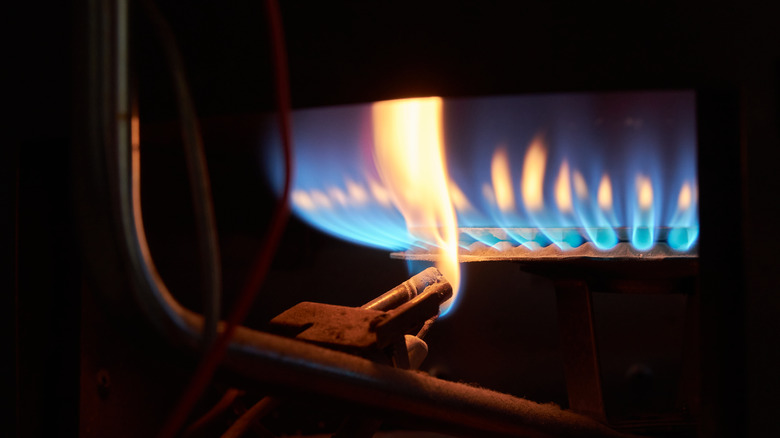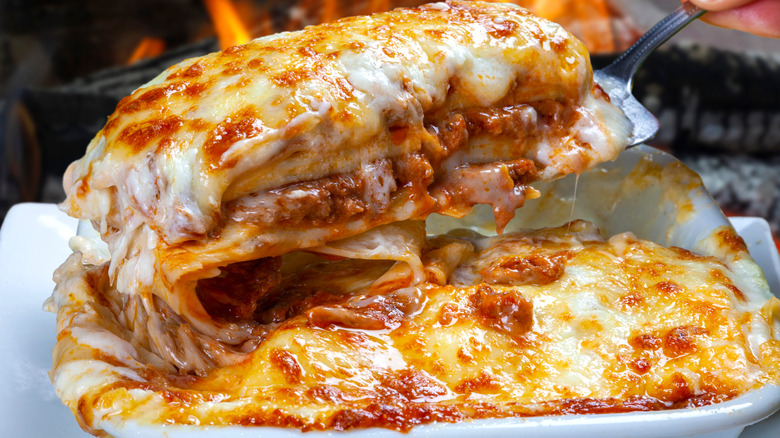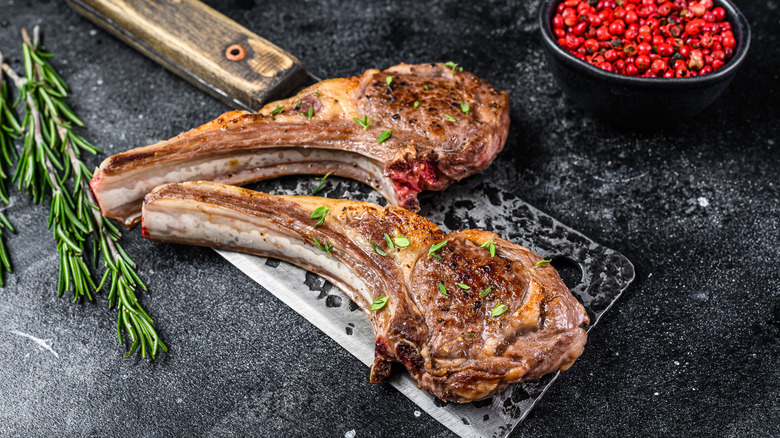Why It Might Be A Bad Idea To Put Oily Food Under Your Broiler
Forget all the trendy appliances taking up room in your closets, garages, and on your kitchen counters. The always under-appreciated broiler is one of the most powerful cooking vessels.
The broiler is a vastly under-utilized cooking tool in most home kitchens — and in some restaurant kitchens, too! Known for its ability to produce crisped, bronzed masterpieces out of baked pastas, chicken parmesan, creme brûlées, and so much more, the broiler is an indisputable kitchen powerhouse. It can be finicky, though; look away for just one second too many, and your prized lasagna is now torched. The art of the broiler is to take deliciously browned foods to a certain limit, ensuring a perfect bronzed top of melted cheese or other ingredients, and removing the casserole or baking sheet from the broiler just before any charring or burning commences. The broiler is also amazing at properly cooking a lean piece of fish or protein, such as a rack of lamb, with the high heat and dry cooking method ensuring a crisp, caramelized exterior and a moist, tender interior. Masterclass notes that the cooking experience most like broiling is actually grilling.
At the same time, though, there are a few broiler rules that must be followed to ensure properly cooked food and a safe cooking experience. One of them is especially important.
Why shouldn't you broil oily foods?
Depending on the broiler you have in your kitchen, the cooking experience can be very different. Some are basically ovens with higher/different settings, while others are very flat and contain a sliding drawer of sorts. These work very well but are a bit more limited in the range of cookery you're able to do. As noted by AllRecipes, the direct heat ensures a quick, thorough cook. Essentially, if you haven't been using your oven's broiler, you've been using your oven all wrong.
Martha Stewart notes that while some broilers have an on or off setting, some also have "high" or "low" options, which are also important to consider based on what you're cooking. Furthermore, Bon Appetit adds that most broilers don't exceed 550 degrees. However, the power of the flame greatly intensifies the cooking experience. Direct vs. indirect exposure is a vastly different cooking experience.
There are also a few other notes to be aware of. Beware of using glass, nonstick cookware, and silicon; never use parchment paper; and be mindful of any foodstuff that might be coated in too much oil, sauce, or marinade. However, rest assured that using foil is A-okay, according to Taste of Home. In addition, AllRecipes notes that food that is doused with oil can actually catch fire in the broiler! That should speak for itself, but always be certain that your broiled food is not coated with moisture in order to safeguard the cooking process as best as possible.
How long should food be broiled for?
Taste of Home notes that some broilers require preheating, and if you have a broiler and/or oven that has multiple racks, be especially careful about where you're pacing certain foods or dishes. If it's too close to the heating element, the food might burn, but if it's too far, you may not achieve the desired result. Most broilers also cook food fully within about 10 minutes, so definitely be sure to not exceed that amount of time. Or, at least pay very, very close attention once the food has been broiling for more than 10 minutes.
As noted, broiling is also an amazing way to complement or finish off a dish, but be mindful because broilers won't cook certain thick cuts of meat or other foods fully, and will scorch the exterior before the interior is cooked through. This is why many dishes often call for a baking time and then a broiling time afterwards, merely to crisp up the dish prior to serving.
Beyond the customary dishes that you'd expect to be broiled — or unique broiling choices like crab cakes — The Spruce Eats also notes that broiling fruits and veggies are also great options. One especially delicious choice would be broiled fruits with a touch of brown sugar, served with yogurt or whipped cream. You can also try a broiled crab cakes recipe for the perfect appetizer.


